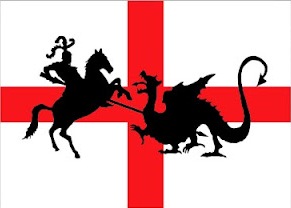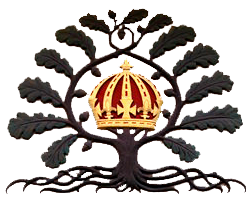The Feminisation of the Church of England Rolls On Apace
 Embryo Parson Posted on
Embryo Parson Posted on  Thursday, October 11, 2012 at 03:36PM
Thursday, October 11, 2012 at 03:36PM From Virtue Online, on how liberals have turned the CofE into a Womanchurch. A note to Anglican Ritualists, however: clergy and acolytes in lace aren't likely to draw the men back. Beware too of prissy Anglo-Catholic aestheticism:
By Roland W. Morant
Special to Virtueonline
www.virtueonline.org
October 8, 2012
In the current drawn out discussion on women priests and women bishops, one issue that has been largely overlooked has been the effect on men. If this issue is approached from a strict politically correct perspective, it can be argued that as the roles of leadership in churches pass from men to women, because such roles are accepted as equal and identical there ought to be no difference in the effect on men in the pews. But if in practice as others maintain, the engendered roles of leadership do not conform to a common outcome pattern, differences may well emerge in the way men respond to women exercising ordained leadership.
Before we can address this problem directly, it behoves us to remember some well established facts. These are facts which, it must be admitted, apply to nearly all the mainline churches of the West (taken here as Anglican, Methodist, Roman Catholic, Lutheran, Reformed etc., but not Orthodox).
Men and women worshippers: In mainline churches the numbers of worshippers of both genders have been steadily falling, with some of the greatest falls occurring in recent years. In whatever way the figures are interpreted, almost all the churches have experienced similar falls. If we take figures from the Church of England's own statistical department, we find that during the last eleven years from 2000 there has been a steady drop in average attendance on Sundays from 1,058,000 to 924,000. Thus in this period 134,000 adults, young people and children ceased to attend church, i.e. a fall of 12.7% or, very roughly, 1% per year.
Is it possible to break down the above figures by gender? Not it seems by the C. of E statisticians. Nevertheless several pieces of research have been done in Great Britain, the U.S.A. and continental Europe, all of which confirm a general finding which is that year by year the loss of men from churches of every mainline denomination is not only greater than that of women, but that this loss is getting worse year after year.
To illustrate this, Peter Brierley found that attendance at church in 1980 was 57% for women and 43% for men. In the year 2000 the figures were 60% or women and 40% for men; while in 2010 attendance for women was 63% and 37% for men. Thus although there was a net loss of men and women from churches in the ten year period 2000 to 2010, the proportion of women still attending (albeit in an overall shrinking group) appeared to be steadily rising. This must have been because men were leaving churches at a much faster rate than the women.
The proportion of men worshippers relative to women worshippers has been in decline for a very long time, almost certainly from before the end of the medieval period. The Reformation, a male instigated and led activity, may have slowed down or even reversed temporarily in some of the new national churches a decline in men's attendance. Other factors since then which may have boosted men's presence at acts of worship were the Methodist revival in the eighteenth century, and several other revivals (e.gs. Tractarian, Evangelical) in the Nineteenth Century.
But when we come to recent times, i.e. the Twentieth Century and the present one, we can see quite clearly that the falling away of attendance at church, especially by men has become more pronounced and very visible, and deservedly should be called a haemorrhage of the lifeblood of the Church. That nearly all mainstream churches for a long time - and increasingly so in recent times - steadily and spectacularly have lost their men folk, ipso facto is turning Christianity into a female religion. And that is about as serious a criticism as can be made about the Christian religion today.
What effect has the ordination of women in the C. of E. (and soon to be, the consecration of women as bishops) had - or may have in the future - on this tendency? Obviously, as this general trend towards feminisation within churches has been going on for a long period, the recent advent and practice of ordained women's ministry cannot be held responsible for what has been happening in the more distant past.
In the C. of E. the first women were ordained as deacons in 1987 and the first women deacons as priests in 1994. Since then women have made rapid strides in entering the ministry. In 1994, 106 women and 273 were ordained. Sixteen years later (2010), more women (290) than men (273) were ordained. So the scales over this period have gradually but incessantly tipped towards the women.
To bring us up to date, in the latest figures which are available (compiled from official figures), in 2011 there were 1,763 full time women priests working in C. of E. parishes, a 50% increase from the year 2000. Approximately one in five paid priests (for such are all these full time women priests) now work in the Church.
It has therefore been argued that if this trend continues, it is inevitable that "women would comprise the majority of spiritual leaders in England". Moreover, David Martin, former Professor of Sociology, is on record as having said recently, "It's obvious that over time the priesthood will become increasingly a female profession. As far as the church has a future, it will include a predominant ministry of women and they will get to the top".
However, a degree of caution is needed before we can say without equivocation that the input of women priests into parish churches has led directly to many men abandoning going to church. What we can say is this: From before 1994 (halfway through the Decade of Evangelism in England) there has been a haemorrhage of people from attending church on Sundays, increasingly these being men. And since 1994 there has been a steady influx of ordained women into the churches, with no noticeable slowing down of the exit of men from the pews.
A cardinal rule in statistical analysis is not to base predictions on a single item of data. The following personal experience therefore should not be understood to infer what will happen in many churches through the placement of women into leadership roles in many churches. Some months ago I visited a church for a quite separate reason and purchased its parish magazine. It listed its incumbent, paid curate and non-stipendiary priest as women. Its two church wardens were women. In the list of services for the coming month giving details of lay people due to read portions of the scriptures and to lead the prayers, all but one person was a woman. It may well be an unpopular thing to say, but what religious incentive is there for any man to attend that church?
A lot of literature has been written and a substantial amount of research done on why men generally cease to attend church, a phenomenon not matched in the other great religions. One of the main reasons is that the type of religion presented via worship in church where women are normally in the great majority, is expressed in female-friendly terms (e.g. Jesus being often symbolised as the Lamb of God rather than as Lion of Judah).
The leadership of the Church of England has, quite clearly, in recent years encouraged women to explore and find their vocations as priests, and soon as bishops. Such encouragement may be well and good, and conform to the prevalent secular standards of equality. Yet from another standpoint it might invoke a law of unintended consequences in which the C. of E. fills its dioceses and parishes with women in leadership roles, but finds too late that it has no men in the pews (except a few feminised men). As David Murrow persuasively writes in his book, "Why Men Hate Going to Church", the "Church of England is quickly becoming a church of women, by women and for women".
Roland W. Morant is a cradle Anglican who has spent his professional life as a teacher, and latterly as a principal lecturer in education in a college of higher education, training students as teachers and running in-service degree courses





Reader Comments